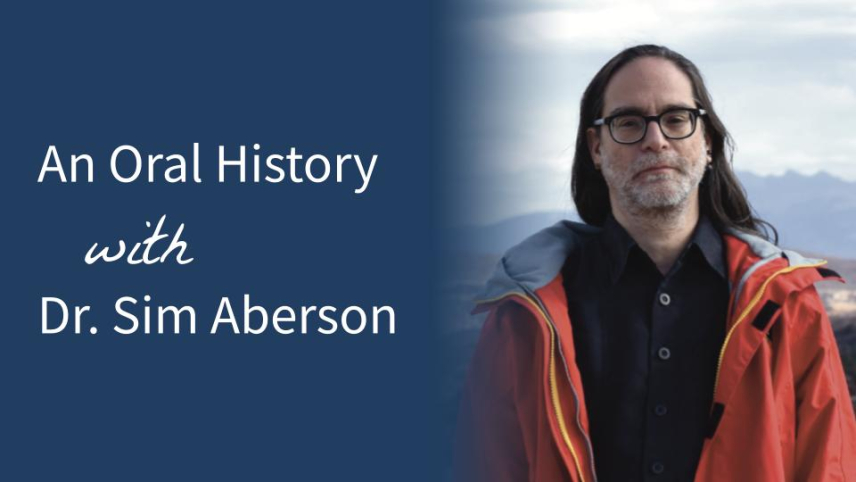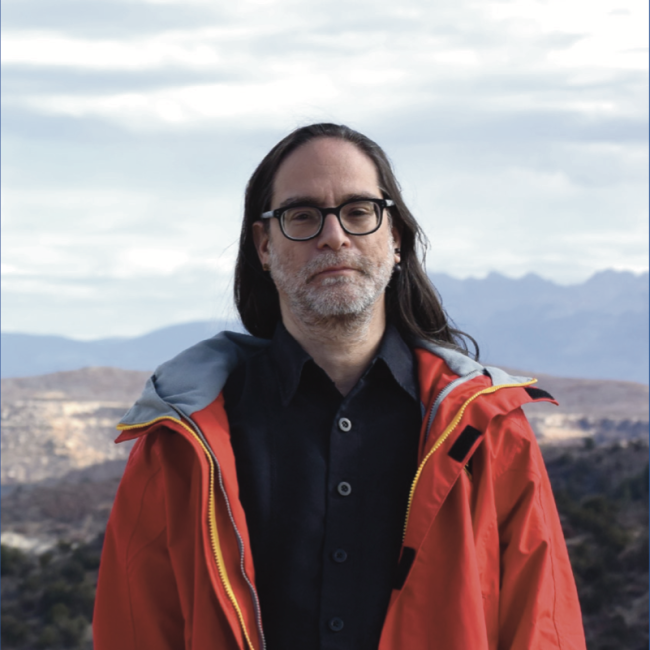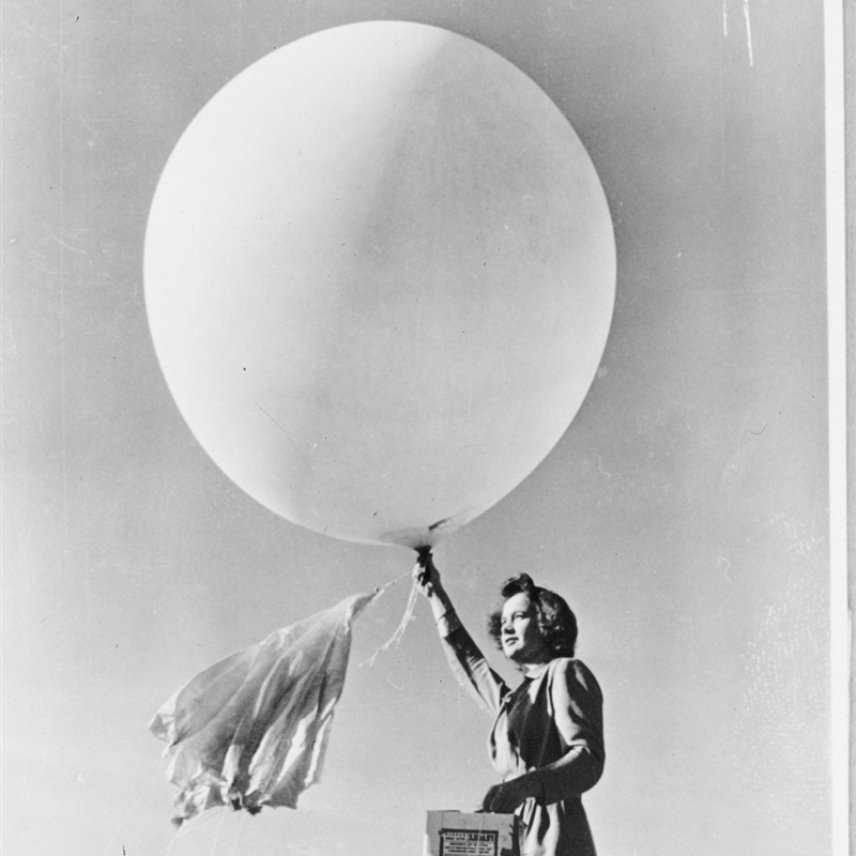This oral history was conducted by Molly Graham in 2021 as a part of the NOAA 50th Anniversary Oral History Project.

Not many high school seniors get to contribute to cutting-edge hurricane research, but in the early 1980s Dr. Sim Aberson was a gifted student, “obsessed” with hurricanes and weather, and lived in Miami. He participated in a program that sent him to NOAA’s then-called National Hurricane Research Laboratory, where he worked on a project inserting data from NOAA Hurricane Hunter aircraft into a hurricane model. This was the beginning of a life-long involvement in meteorology and hurricane research.
Dr. Aberson began working full-time for NOAA after graduate school and has focused for much of his career on researching how dropwindsonde and airborne Doppler radar data can improve hurricane forecasts. Dropwindsondes are instruments deployed from NOAA’s Hurricane Hunter aircraft and drift down on a parachute measuring pressure, temperature, humidity and wind as they fall.
During his career, Dr. Aberson flew on numerous missions to collect data from hurricanes, including Hurricanes Georges (1998) and Isabel (2003). In 1995, Dr. Aberson obtained his PhD from the University of Maryland College Park. His dissertation work is still being used to determine where to send NOAA’s G-IV plane during a storm.
Audio file
Listen to the full interview with Dr. Sim Aberson.
Transcript:
On flying into Hurricane Georges as the Lead Project Scientist:
SA: “Yeah so, that was in 1998. I flew Georges. That was an interesting flight. I think that was the first time I was what we called the lead project scientist, which is the research scientist on board the plane who knows what we’re going to do and has the aircraft crew working toward the goal of the particular experiment. When we fly into a system, each flight has a goal. We have an experiment, and every year since, I think, the ’60s, we’ve had a field program plan with explanations of the individual experiments that we want to do, and those are all online and available. We still do that. It’s the lead project scientist’s job to guide the plane, make sure everybody’s doing – all the research people on board are doing their job but also to give their expertise, say, “That looks interesting. Can we take the plane there?” – based on safety concerns, where the pilots are willing to go, etc., and make changes on the fly. If we want to study some convection, I’d have to look at the data and say, “Oh, the convection we want is over here, so we need to go over here to do what we want to do.” Sometimes it’s a little more complicated than others, and sometimes it was communication between the two planes, which back then was radio, and it was really difficult, so I think that was the first time that I actually did that job, and that's the top job, except for the total head of the field program plan. Georges was 1998.”
On flying in Hurricane Isabel:
“Another experience that I had was in Hurricane Isabel, where we were doing this experiment called CBLAST [Coupled Boundary Layers Air-Sea Transfer], which was looking at boundary-layer information to try to learn how the energy from the ocean gets into the atmosphere and the structure of the winds and the structure of the ocean, all near the surface. In order to get that, you need to fly pretty low. We were flying in clear air down to about a hundred and fifty or a hundred and seventy feet. It was really, really amazing down there, and it looked like the waves were going to hit the wings. There’s a lot of video online from those days. We got a lot of really good data. We’d flown missions like this in Hurricane Fabian and Hurricane Isabel. When we were rising out of that, we got to nine hundred feet, and one of the engines caught on fire. They put it out almost immediately. Before I was even able to register that they said engine three was on fire, it was out. But then we had three engines, and we had to very – three out of the four – we had to very slowly go back to St. Croix. They had fire engines lining the runway and everything. We landed safely. Later, when they started the engines, it turned out that all of the engines were about to do that. It turned out that it was from salt getting into the engines, so now they have instruments on the plane that measure the salt and make sure that doesn’t happen.”
On how access to weather information has changed over the years:
“When I started, we had no access to weather information. We had somebody at HRD faxing us just paper information on what’s going on with the storm, and we’d all gather around the paper. Then the Weather Channel started, and we would start watching the tropical updates on the Weather Channel. Now, it’s all online, so we don’t have to worry about any of the stuff. Now we have an internet connection on the plane, so we can talk to the people on the plane and coordinate and do all sorts of stuff. Things have really changed a lot in that regard. It’s both easier and harder to do a lot of stuff.”



